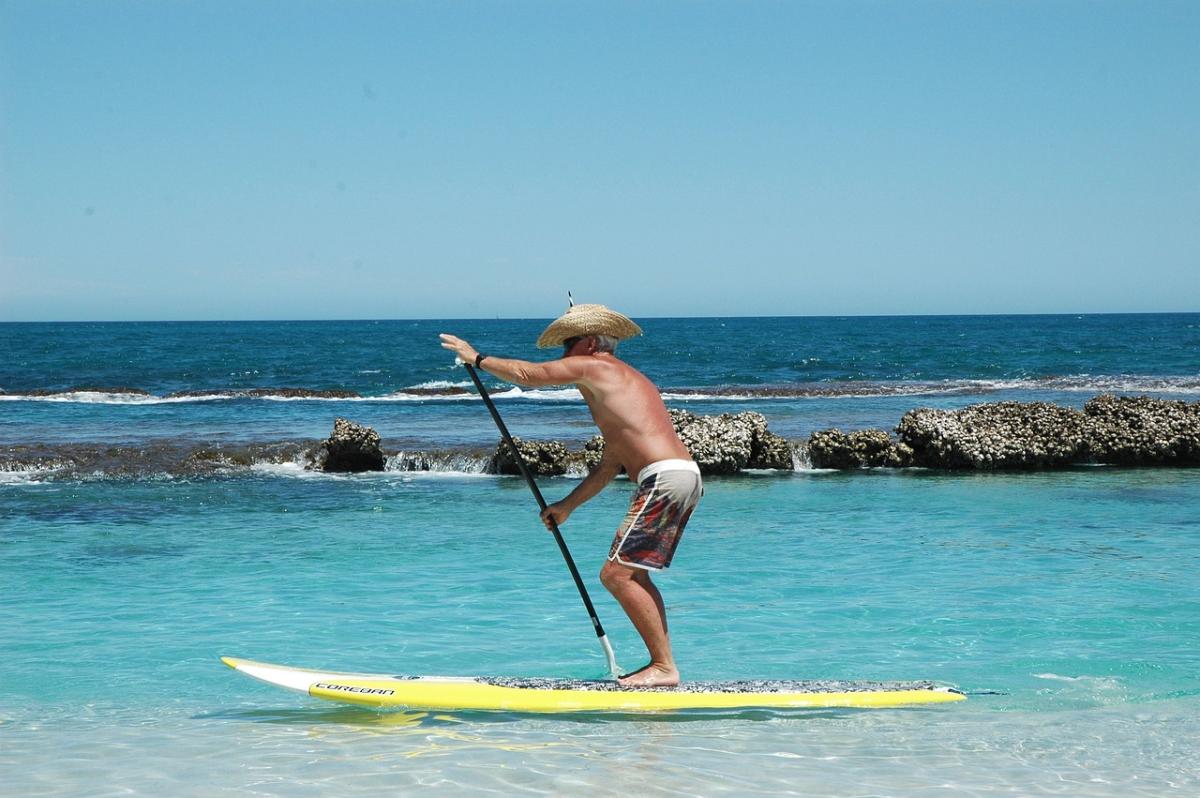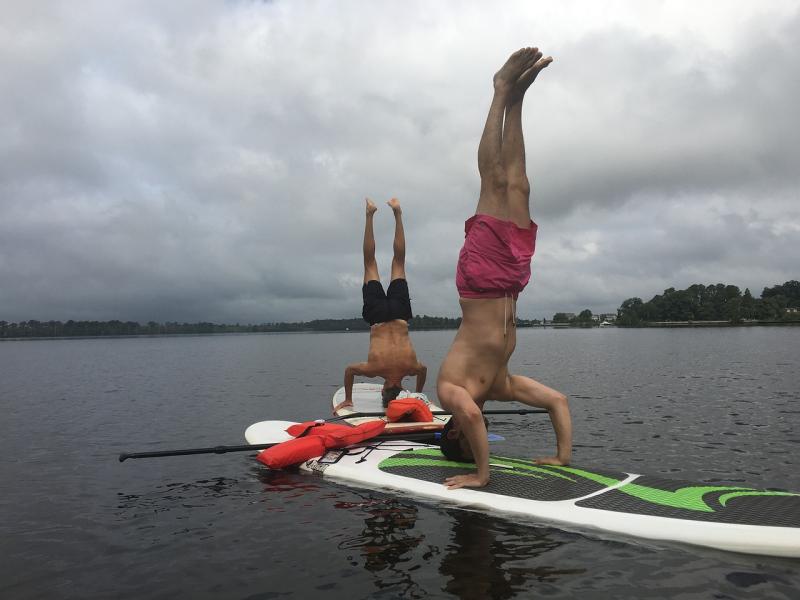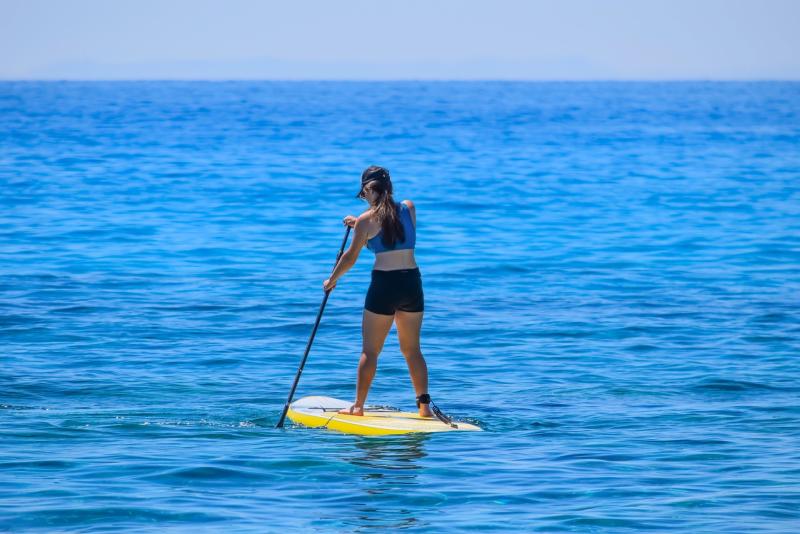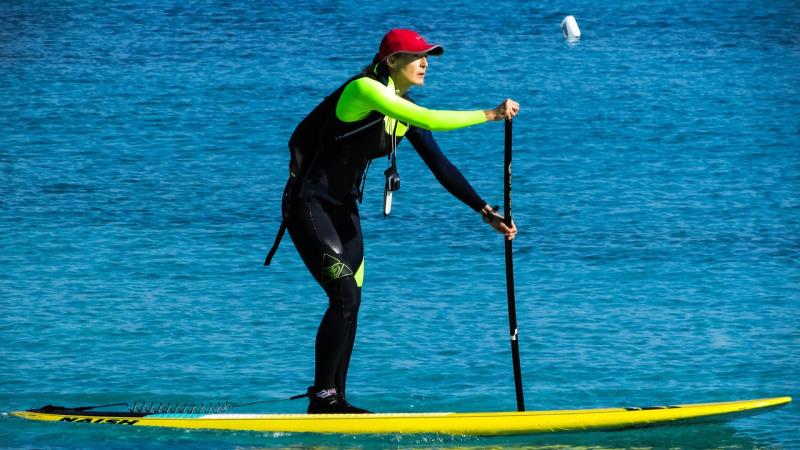Paddleboarding has gained tremendous popularity in recent years as a thrilling water sport that combines tranquility and physical fitness. Before embarking on your paddleboarding journey, it's crucial to understand the different types of paddleboards available. This detailed overview will help you choose the perfect paddleboard based on your preferences, skill level, and the type of water you plan to explore.
All-Around Paddleboards
All-around paddleboards, often referred to as general-purpose or recreational boards, are the most versatile option. They cater to beginners and experienced paddlers alike. With a moderate width and length, they offer great stability, making them suitable for various water conditions such as lakes, calm rivers, and even small waves. All-around paddleboards are excellent for leisurely paddling, yoga sessions, and occasional surfing.
Touring Paddleboards
If you are looking to embark on longer excursions or explore for extended periods, touring paddleboards are your best bet. These boards typically have a sleeker design and are longer and narrower than their all-around counterparts. The increased length enhances tracking, allowing you to paddle straighter and covering longer distances with ease. Equipped with extra storage options, touring paddleboards can carry essentials like water, food, and gear, making them ideal for exploring rivers, coastal areas, and large lakes.
Inflatable Paddleboards
Inflatable paddleboards have gained significant popularity due to their convenience and portability. Made from sturdy yet lightweight materials, these paddleboards can be easily deflated, rolled up, and stored in a compact backpack, making them perfect for travelers or individuals with limited storage space. Inflatable paddleboards offer excellent stability and are suitable for most water conditions. They are fantastic for recreational paddling, yoga, and even fishing.
Choosing the Right Size: Finding Your Perfect Fit
When it comes to finding your perfect paddleboard, size matters! Paddleboarding is all about balance and maneuverability, and having the right size board can make all the difference in your experience on the water.
First, consider your weight and skill level. Generally, heavier individuals and beginners may fare better on wider and longer boards. A wider board provides more stability, which is essential for beginners who are still learning to find their balance. For those on the heavier side, a longer board will offer better buoyancy and support.
Next, think about your intended use for the paddleboard. Are you planning to explore calm lakes and rivers, or are you seeking the thrill of riding ocean waves? For calm waters, a shorter and narrower board will suffice. These boards are easier to maneuver and will allow you to glide smoothly through the water. If you're into surfing, consider a shorter board with a pointed nose and a more narrow tail, designed for catching waves with precision and speed.
Ultimately, the best way to find your perfect fit is to try out different sizes and shapes of paddleboards. Visit your local watersports shop or rental center and request a demo. By getting hands-on experience, you'll be able to determine which size feels most comfortable and suits your specific needs. Remember, finding the right size paddleboard will enhance your paddleboarding adventure and ensure a day of fun on the water!
Understanding Paddleboard Materials: Quality That Matters
When searching for the perfect paddleboard, it is essential to consider the materials used in its construction. The material of a paddleboard can greatly impact its performance, durability, and overall quality. Understanding the different paddleboard materials available will help you make an informed decision and find the board that suits your needs best.
One popular paddleboard material is polyethylene. This strong and durable plastic is known for its resistance to impact and scratches, making it an excellent choice for beginners or those planning to use their paddleboards in rocky or shallow waters. Polyethylene boards are highly affordable and require minimal maintenance, making them an ideal option for recreational paddlers.
Another common material used in paddleboard construction is epoxy fiberglass. This blend utilizes a foam core wrapped in fiberglass layers, creating a lightweight and sturdy board. Epoxy fiberglass paddleboards are popular amongst performance-oriented paddlers due to their exceptional maneuverability and speed. However, they can be more expensive and require regular care to maintain their condition.
Lastly, there are inflatable paddleboards, which have gained significant popularity in recent years. These boards are made from durable PVC materials that allow them to be inflated and deflated as needed. Inflatable paddleboards offer excellent portability and storage convenience, making them ideal for paddlers who travel frequently or have limited storage space. Although inflatable boards may not provide the same speed and maneuverability as their rigid counterparts, they offer superb stability and versatility for various water activities.
Essential Accessories: Enhancing Your Paddleboarding Experience
When it comes to paddleboarding, having the right equipment can greatly enhance your experience on the water. While a paddleboard is the main ingredient, there are a few essential accessories that will take your paddleboarding adventures to the next level.
The first accessory on our list is a personal flotation device (PFD). Safety should always be a priority, and wearing a PFD is a must, especially if you're a beginner. Look for a comfortable, lightweight, and Coast Guard-approved PFD that doesn't restrict your movement. A PFD will not only keep you safe but give you peace of mind while gliding through the water.
Next up is a paddle. It may seem obvious, but having the right paddle can make a huge difference in your paddleboarding experience. Look for a paddle that is lightweight, durable, and adjustable. This way, you can easily tailor it to your height and paddling style. Carbon fiber and fiberglass paddles are great choices, as they offer excellent performance and are relatively lightweight.
Last but not least, investing in a good leash is crucial. A leash attaches to your ankle or calf and connects you to your paddleboard, preventing it from floating away if you fall off. A leash is especially important in choppy waters or areas with strong currents. Look for a coiled leash, as it reduces the drag in the water and avoids tangles. Remember to always attach the leash to the back ankle, so it doesn't get in your way while paddling.



